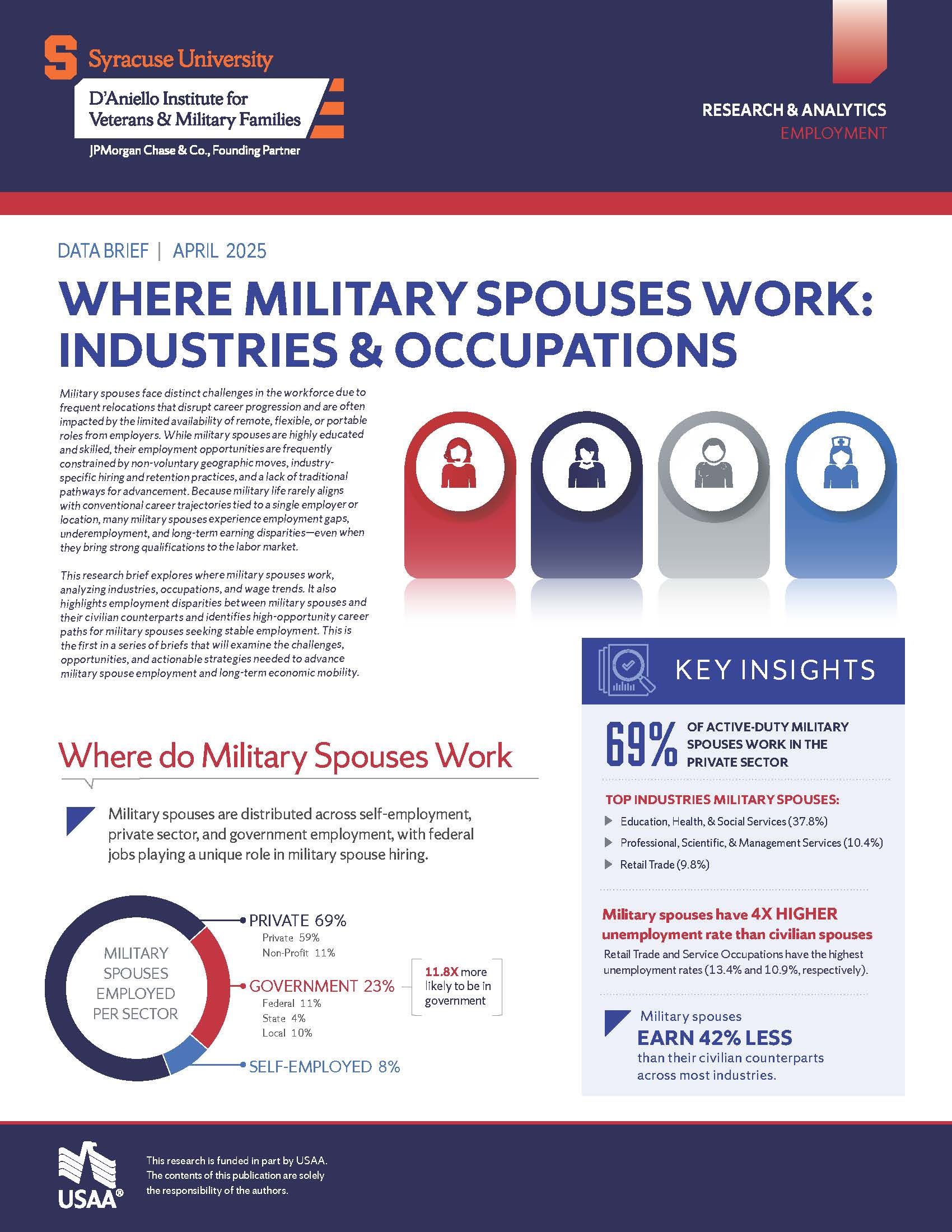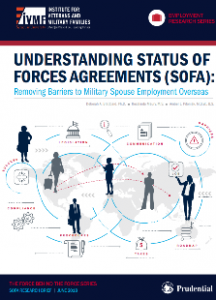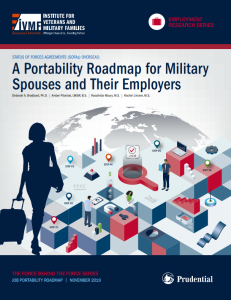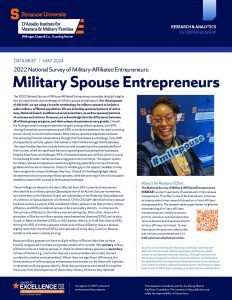
Brief #1: Where Military Spouses Work – Industries & Occupations
This brief provides a detailed view of the industries and occupations where military spouses are employed, including analysis of income, employment distribution, and gaps in sector advancement. It also highlights the unique role of federal employment and identifies high-potential career paths for long-term stability.
Top Findings:
- Military spouses experience unemployment rates that are 4Xs higher than their civilian peers. Unemployment is especially high in retail (13.4%) and service occupations (10.9%).
- Military spouses earn 30% to 50% less than civilians, even in high-demand industries such as healthcare, finance, and professional services.
- More than 60% of military spouses are employed in just three sectors: education, health and social services (37.8%), retail (9.8%), and professional services (10.4%). These sectors tend to offer lower wages and limited opportunities for career advancement.
- Frequent relocations continue to disrupt careers. Military spouses move 3.6Xs more often than civilians, and those who relocated in the past year earn 32% less than their peers who did not move.
- Military spouses are underrepresented in leadership and management roles and overrepresented in administrative and support positions. This imbalance limits upward mobility and contributes to long-term wage gaps.
- The brief recommends shifting the focus from hiring to career continuity. Solutions should prioritize portable career paths, remote work options, leadership development, and work/compensation aligned with qualifications and job responsibilities.






